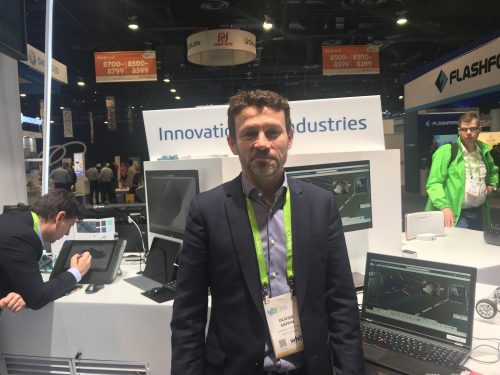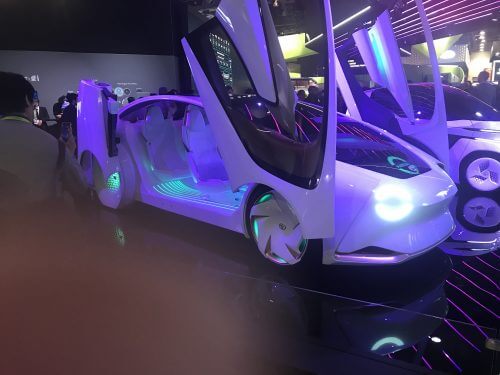That's what Olivia Saphan, vice president of transportation and mobility at Dassault Systèmes (3DS), says during the CES exhibition in Vegas. The company is preparing for an era in which the cars will be autonomous and also in case we stop buying cars and use autonomous cooperative transportation services that will cooperate with the other cars and with the infrastructures

"3D design and printing have become necessary for the changing automotive industry." This is what Olivier Sappin, vice president for transportation and mobility at Dassault Systèmes (XNUMXDS), told the science website during the CES exhibition held at the beginning of this month (January) in Las Vegas.
"XNUMXD printing is very suitable for the needs of the automotive industry. We have become an integral and necessary part of this industry. XNUMXD printing is used both for planning and for simulating vehicles. Dassault supplies the necessary software for printing and also for simulating the behavior of the vehicle and its components."
What is special about simulating the behavior of the autonomous car?
Safan: "Autonomous cars have the addition of electronic software and it is necessary to simulate the vehicle's behavior when combining the physical and electronic systems with the software.
When planning the automatic braking of the vehicle, for example, it is necessary to build a script using a storyboard to simulate the event. After that, it is necessary to determine the parameters of the system, engineer it and simulate it. For this purpose, we provide a platform that satisfies various business needs:
- The first is Compliance with constitutional/regulatory requirements: regulation, consumer rights, etc. All the requirements are recorded so that the engineer can make sure that the system meets all the requirements.
- The second is Simulation of all vehicle systems for systems engineering. It is necessary to simulate all the parts so that it is possible to see and understand how each one works and is affected and how a change in one system affects other systems.
- The third is Compliance with the requirements of the law and regulations (certification). For this purpose, one must write precise specifications and document each step in the process and also perform various simulations. Using Dassault software you can map the computer and electronics systems and all the components (software and hardware) within it in order to plan and analyze the systems.

"It is impossible to reach a billion km with real test drives - we need imaging systems
"It is accepted today that in order to achieve the certification of an autonomous vehicle, a cumulative experience of 1,000,000,000 km of driving will be necessary! Of course, there is no possibility that someone will, in practice, drive a billion kilometers in a car every time it is necessary to get a new permit, therefore, if you want to perform all the necessary tests, it is necessary to do it in a computerized way. There is also a need to bring information from the field for planning purposes. We help engineers integrate the information they receive from the field into the planning systems, and enable a fast and efficient process that amounts to receiving all the necessary approvals."
"The invention of the electric car created requirements for the design and analysis of new and complex systems. For example, the electric motor in a car operates at high speeds, in an environment with a lot of vibrations and changing temperatures. To ensure our ability to design and simulate the above systems, in 2017 Dassault Systèmes acquired companies that are proficient in physical, electromagnetic and other simulations:
What are your next challenges in the field of transportation?
"Our next challenge at Dassault Systèmes is to understand what changes are expected in the field of transportation. It is possible that tomorrow they will stop buying private cars altogether. The cars may become part of integrated urban transportation systems. As we design systems of individual cars today, we can design the integrated systems where each and every car transmits information from its environment to the central system for its proper timing and operation. We are already carrying out such projects today, in Singapore, in Brittany (northwest France) and in other places around the world. Among other things, it is necessary to plan new roads and related infrastructure and calculate how they will affect all the systems in the city in various areas such as air pollution and transportation."
